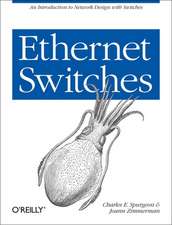Interactive Computer Systems: Videotex and Multimedia
Autor A. F. Alberen Limba Engleză Paperback – 24 oct 2012
Preț: 339.34 lei
Preț vechi: 424.17 lei
-20% Nou
Puncte Express: 509
Preț estimativ în valută:
64.93€ • 67.98$ • 53.73£
64.93€ • 67.98$ • 53.73£
Carte tipărită la comandă
Livrare economică 05-19 aprilie
Preluare comenzi: 021 569.72.76
Specificații
ISBN-13: 9781461362517
ISBN-10: 1461362512
Pagini: 456
Ilustrații: XVIII, 435 p.
Dimensiuni: 152 x 229 x 24 mm
Greutate: 0.61 kg
Ediția:Softcover reprint of the original 1st ed. 1993
Editura: Springer Us
Colecția Springer
Locul publicării:New York, NY, United States
ISBN-10: 1461362512
Pagini: 456
Ilustrații: XVIII, 435 p.
Dimensiuni: 152 x 229 x 24 mm
Greutate: 0.61 kg
Ediția:Softcover reprint of the original 1st ed. 1993
Editura: Springer Us
Colecția Springer
Locul publicării:New York, NY, United States
Public țintă
ResearchCuprins
1. The Business Scene.- 1.1. The Changing Business Environment.- 1.2. Rise of the Computer Culture.- 1.3. The Information Investment.- 1.4. Summary.- References.- 2. Enhanced Systems.- 2.1. General Features.- 2.2. Enhanced Business Applications.- 2.3. Impact on Data Processing.- 2.4. Summary.- References.- 3. Computer Options.- 3.1. System Characteristics.- 3.2. Configurations.- 3.3. Architecture.- 3.4. The Art of Obfuscation.- 3.5. Summary.- References.- 4. The Workbench.- 4.1. Equipment Features.- 4.2. Limited-Intelligence Terminals.- 4.3. Microprocessors.- 4.4. Computer Telephones.- 4.5. Picture and Video Terminals.- 4.6. Public Access Terminals.- 4.7. Developing a Corporate Policy for Enhanced Terminals.- 4.8. Summary.- References.- 5. Connectivity.- 5.1. Communications.- 5.2. Storage and Transmission.- 5.3. Summary.- References.- 6. Communications Services.- 6.1. Some Terminology.- 6.2. Public Systems.- 6.3. Private Systems.- 6.4. Summary.- References.- 7. The Path to Applications.- 7.1. Gateways.- 7.2. Code of Practice: Gateways.- 7.3. Open Network Architecture.- 7.4. Hypothetical Enhanced Service Offering.- 7.5. Summary.- References.- 8. Software.- 8.1. Classifying Software.- 8.2. Functions.- 8.3. Software Products.- 8.4. Authoring Software.- 8.5. Selecting Software and Living with the Decision.- 8.6. Summary.- References.- 9. Laying the Groundwork.- 9.1. Selling the System.- 9.2. Nurturing Expectations.- 9.3. Economic Realities.- 9.4. Staffing Considerations.- 9.5. Summary.- References.- 10. Planning and Producing the Infobase: Part 1.- 10.1. An Example of a Focused Infobase.- 10.2. Developing Quasi Standards.- 10.3. Planning and Designing the Infobase.- 10.4. Summary.- References.- 11. Planning and Producing the Infobase: Part 2.- 11.1. Preproduction.- 11.2. Production.- 11.3. Reviewing and Editing.- 11.4. Record Keeping.- 11.5. Auditing and Rejuvenating the System.- 11.6. Summary.- References.- 12. Survey of Enhanced Information Systems.- 12.1. Mail Survey.- 12.2. Orientation and Objectives.- 12.3 Technology.- 12.4. Design and Implementation.- 12.5. Problems, Pitfalls, and Complaints.- 12.6. Evolution and Impact.- 12.7. Summary.- 13. Cases: Implementing Operational Systems.- 13.1 Clark Distribution Services, Inc.: Clark Net II.- 13.2. National Library of Medicine.- 14. Cases: Implementing Strategic Systems.- 14.1. E.I. Du Pont De Nemours and Company.- 14.2. Fort Worth Star-Telegram—Startext.- 14.3. Ford Motor Company.- 14.4. AMR Corporation—EAASY SABRE.- 15. Cases: Public Access Terminals.- 15.1. Franklin Institute Science Museum—Unisystem.- 15.2. General Motors Corporation: The Town Crier.- 15.3. Merck & Company—Heartfelt Advice.- Appendix A. Survey of Enhanced Information Systems.- Appendix B. Acronyms and Abbreviations.- Appendix C. Glossary.











